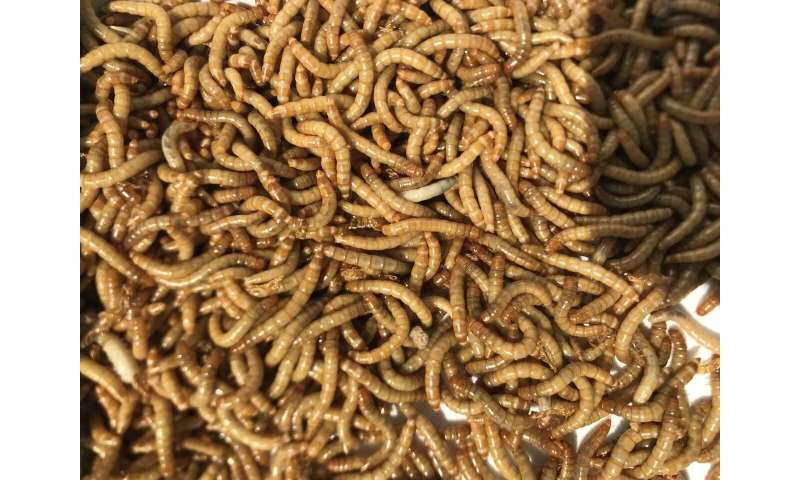Study finds insect shows promise as a good, sustainable food source

With global food demands rising at an alarming rate, a study led by IUPUI scientists has found new evidence that a previously overlooked insect shows promise as alternative protein source: the yellow mealworm.
The research is based upon a new analysis of the genome of the mealworm species Tenebrio molitor led by Christine Picard, associate professor of biology and director in Forensic and Investigative Sciences program at the School of Science at IUPUI.
The work was published in the Journal of Insects as Food and Feed on Aug. 31.
"Human populations are continuing to increase and the stress on protein production is increasing at an unsustainable rate, not even considering climate change," said Picard, whose lab focuses on the use of insects to address global food demand.
The research, conducted in partnership with Beta Hatch Inc., has found the yellow mealworm—historically a pest—can provide benefit in a wide range of agriculture applications. Not only can it can be used as an alternative source of protein for animals including fish, but its waste is also ideal as organic fertilizer.
Picard and her team sequenced the yellow mealworm's genome using 10X Chromium linked-read technology. The results will help those who now wish to utilize the DNA and optimize the yellow mealworm for mass production and consumption. This new technology integrates the best of two sequencing methods to produce a reliable genome sequence.
"Insect genomes are challenging, and the longer sequence of DNA you can generate, the better genome you can assemble," said Picard.
Picard added the mealworm has—and will have—a wide variety uses.
"Mealworms, being insects, are a part of the natural diet of many organisms," said Picard. "Fish enjoy mealworms, for example. They could also be really useful in the pet food industry as an alternative protein source. Chickens like insects—and maybe one day humans will, too, because it's an alternative source of protein."
Next, Picard said the researchers plan to look at what governs some of the biological processes of yellow mealworms in order to harness information useful for the commercialization of these insects.
More information: T. Eriksson et al, The yellow mealworm (Tenebrio molitor) genome: a resource for the emerging insects as food and feed industry, Journal of Insects as Food and Feed (2020). DOI: 10.3920/jiff2019.0057
Provided by Indiana University
No comments:
Post a Comment